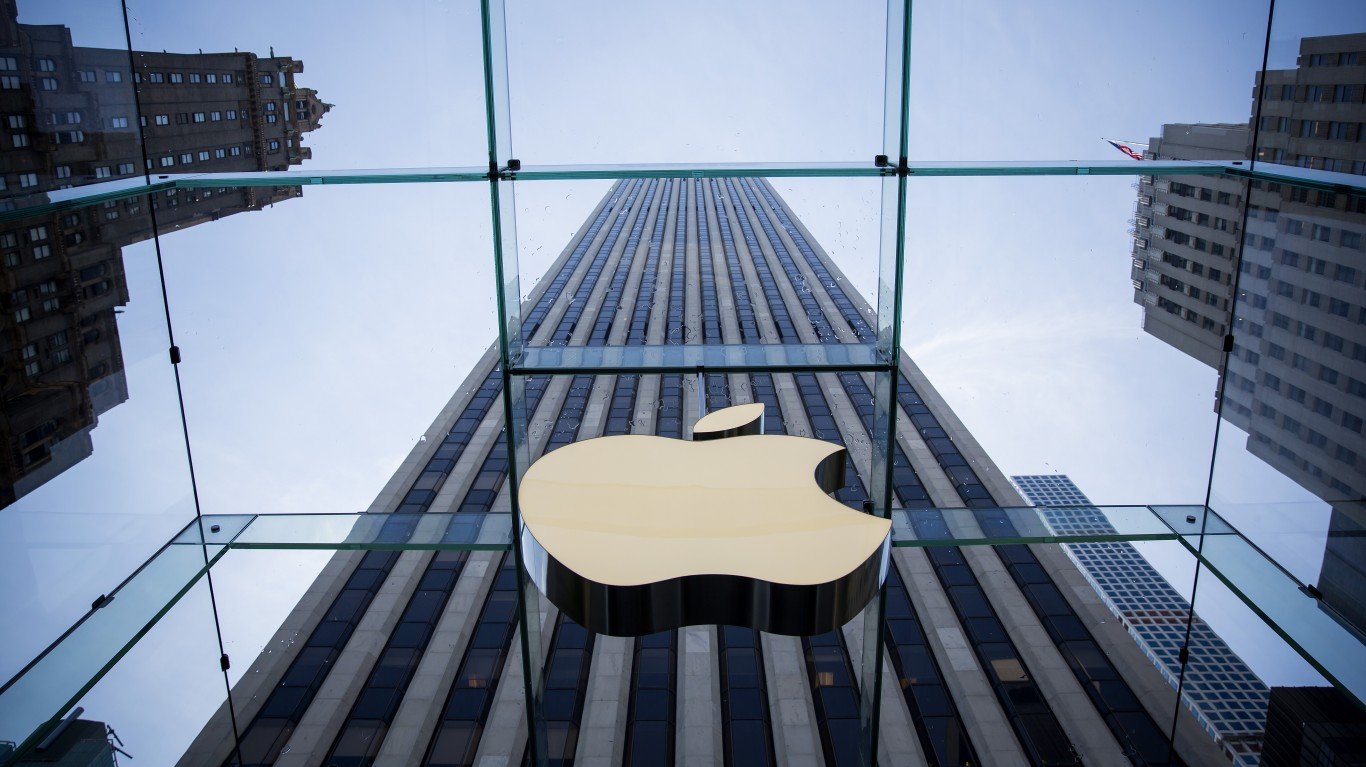

Two of what are by far the most dominant tech companies in America posted breakout earnings. Apple Inc. (NASDAQ: AAPL) proved that there was a massive demand for its expensive smartphones, Macs and iPads. Amazon.com Inc. (NASDAQ: AMZN) proved that retail shoppers were not hurt by the pandemic. The earnings of each showed that the middle class has money to spare, even when employment is well over 10% and tens of millions of Americans are out of work. Big tech has not merely held on financially. It has flourished.
[in-text-ad]
Apple’s iPhone costs several hundred dollars, and in some cases over a thousand. People sometimes get them as part of expensive wireless plans from AT&T Inc. (NYSE: T) and Verizon Communications Inc. (NYSE: VZ). Via either conduit, the iPhone is expensive. Macs are also costly, often in the hundreds if not thousands of dollars. Apple’s App Store posted impressive results. It has hundreds of millions of paid apps.
Apple posted a record quarter in June, based on revenue. Revenue was $59.7 billion, which is up 11% from the same quarter a year ago. Earnings per share came to $2.58, an 18% gain. Sixty-eight percent was from international, which means the sales of its products were strong across the advanced economies. “Apple’s record June quarter was driven by double-digit growth in both Products and Services and growth in each of our geographic segments,” said Tim Cook, Apple’s chief executive officer. Services is the business that Apple says will push future sales. However, that is not true yet, due to Apple’s hardware results.
Services revenue rose to $13.2 billion from $11.5 billion in the same quarter a year ago. The numbers were proof of Apple’s new strengths in is its efforts toward diversity. However, because iPhone revenue was $26.4 billion, up from $25.1 billion, Services has not taken the lead yet. Based on analyst estimates, Apple sold tens of millions of iPhones, which continues a pattern that has gone on for decades. While people who have low incomes buy some Apple products, the middle-class demand for those with discretionary income must have been explosive.
Many analysts said Apple’s success has because people worked at home during the pandemic Those people could have bought other personal computers, which cost a few hundred dollars. But many bought much more expensive Macs.
Amazon showed that people shut in by the pandemic needed or wanted to buy from the hundreds of millions of items it has to offer. Once again, people without discretionary income could not have been the majority of these shoppers, even for Amazon’s food inventory. The middle-class undoubtedly drove the success of Amazon’s most recent quarter. Revenue increased by 40% to $88.9 billion in the second quarter compared to the same quarter a year ago. Earnings were $10.30 per share, against a figure of $5.22 a year earlier
Amazon’s North America e-commerce sales, which are mostly in the United States, rose from $55.3 billion compared to $38.7 billion in the same period a year ago. Amazon also has added over 100,000 workers since the start of the year.
The bad news before the earnings of the two companies was that the U.S. economy has seen the largest drop in history, down 32.9% on an annual declining basis. People who filed for unemployment rose by 1.4 million last week. That drove the nearly 30 Americans who have filed for unemployment. The figure is approaching the total population of California, the U.S. state with the largest population.
These 30 million Americans are not what caused the skyrocketing Apple and Amazon results. The rich are too few in numbers to count for the rise in company sales by themselves.
The success of Amazon and Apple has always relied on a healthy middle class, even in their best quarters. There was a suspicion that sales would be dented by consumer confidence. Instead, the collapsing economy did not hurt them. It is the same reason home sales are rising. Low-interest mortgages do not make up for a frightened population that wants to save their money for future hard times. The forecast of each company, in fact, is proof that the slowing economy has bothered them at all.
The American middle class has not been shaken by this recession. If anything they are confident they will keep their jobs, even if the work from home. Neither the carnage of the pandemic nor recession level unemployment has altered their spending patterns, even slightly.
Thank you for reading! Have some feedback for us?
Contact the 24/7 Wall St. editorial team.
 24/7 Wall St.
24/7 Wall St.


